For the proud fish keeper, there’s nothing more exciting than planning a freshwater fish aquarium.
But as you already know, it’s not quite as simple as choosing the most colorful fish and seeing what happens.
You need to carefully consider the freshwater aquarium fish that are best for you and your fish tank in order to ensure it stays beautiful and thriving for as long as possible.
We’ve compiled this super comprehensive guide to the best freshwater fish for varying levels of fish keeper:
- Beginner
- Intermediate
- Elite
If you’re new to the world of fish keeping, or you don’t have as much time and money to spend on the hobby, we suggest starting with the beginner fish — these are generally hardier, more sociable and easier to keep alive. Once you’ve got a little more experience, feel free to start experimenting with the intermediate and elite fishes.
Let’s get right into it — and remember to let us know in the comments if we’ve left out your favorite tropical freshwater fish!
Freshwater Fish For Beginners
Guppies
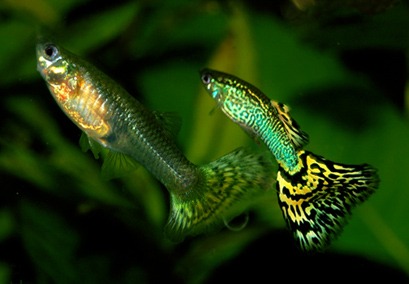
Guppies are an incredibly popular breed of colorful freshwater fish, and are found readily in a huge number of fish stores.
They’re perfect for beginners as they’re so adaptable and able to survive in a variety of different environments. No specialist equipment needed!
- Typical Size: 0.6″-1.4″ (males) and 1.2″-2.4″ (females)
- Typical Lifespan: 2 years
- Breeding: Livebearers
- Natural Habitat: South America
- Optimal Temperature and pH: 78-82°F (72-79°F is best for reproduction) and 6.8 to 7.8 pH
- Optimal Food: Flake food with fish meal, fresh brine shrimp, dried bloodworms
- Minimum Tank Size: 10 gallons
- Behavior: Peaceful
- Best Kept: In a group
>>> Read our complete Guppy care guide
Platies

Another of the best freshwater fish for beginners is the Platy. Like the guppy, they are small and colorful, while being very easy and low maintenance to look after.
They are widely available in a variety of different colors, including blue, white, orange, yellow and red, and many are given funky names like the Wag Tail, Tuxedo platy and Mickey Mouse!
- Typical Size: Up to 1.5″ (males) and up to 2.4″ (females)
- Typical Lifespan: 2-3 years
- Breeding: Livebearers, parents may eat their young
- Natural Habitat: Central America
-
Optimal Temperature and pH: 65-78°F and 7-8 pH
- Optimal Food: Flake food, as well as frozen and live food
- Minimum Tank Size: 20 gallons
- Behavior: Peaceful
- Best Kept: In a group, ideally 2 females for every 1 male
Mollies
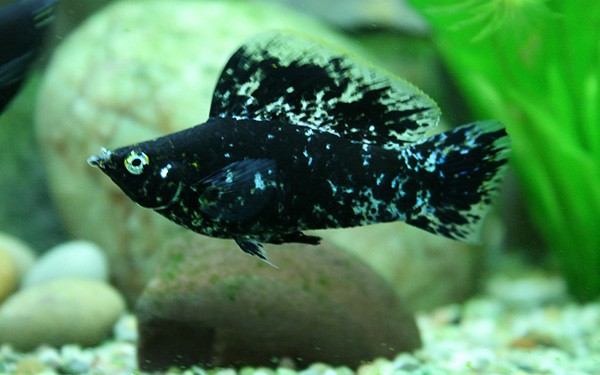
Mollies are an awesomely cool freshwater fish that are great for any beginner aquarium.
Like Platies, they come in plenty of different variations although can generally be categorized as either short finned or sail finned. Short finned are easier to care for and are more common, so we recommend that beginners start with these.
- Typical Size: Up to 4″
- Typical Lifespan: 2-3 years
- Breeding: Livebearers, parents may eat their young
- Natural Habitat: Central America
-
Optimal Temperature and pH: 75-80°F and 7.5-8.5 pH
- Optimal Food: Flake food, as well as vegetables
- Minimum Tank Size: 20 gallons
- Behavior: Peaceful and passive
- Best Kept: In a group, ideally 3 females for every 1 male, generally good with other livebearing species too
>>> Read our complete Molly care guide
Cherry Barb

The Cherry Barb is a popular tropical freshwater fish that’s a member of the large Cyprinidae family.
Like the other fish we’ve studied so far, it’s small, and has a beautiful horizontal stripe through its body. Males are generally a fetching cherry color.
- Typical Size: Up to 2″
- Typical Lifespan: 4 years
- Breeding: Spawns 200-300 eggs
- Natural Habitat: Sri Lanka
-
Optimal Temperature and pH: 73-81°F and 6-8 pH
- Optimal Food: Flake food, as well as vegetables, live and frozen foods
- Minimum Tank Size: 30 gallons
- Behavior: Generally peaceful although mature males can be aggressive
- Best Kept: In a group of 5 or more, with at least 2 females to 1 male
Neon Tetra

These small freshwater fish are the darling of many a beginner’s tank.
Small and colorful, they’re famous for their iridescent stripes through the centre of their body. They’re easy to maintain and adapt well to different aquarium conditions.
- Typical Size: Up to 2″
- Typical Lifespan: 4 years
- Breeding: Egg layer, requires separate breeding tank with minimal light
- Natural Habitat: South America
-
Optimal Temperature and pH: 68-78°F and 5-7 pH
- Optimal Food: Flake food, as well as vegetables, live and frozen foods
- Minimum Tank Size: 10 gallons
- Behavior: Peaceful
- Best Kept: In a group of 6 or more, with other non-aggressive tankmates
Zebra Danios
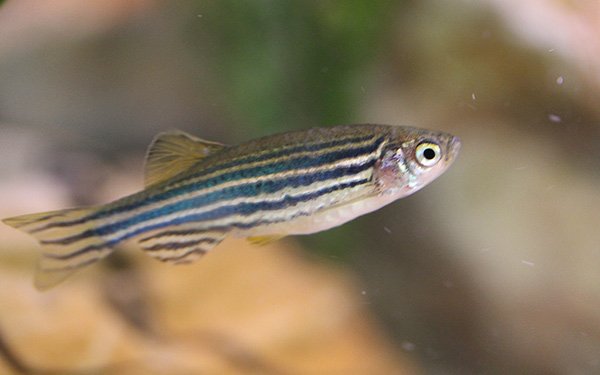
The Zebra Danio is one of the best freshwater fish for beginners as it’s stunningly exotic looking but with minimal care requirements.
They’re super hardy, love swimming and can adapt to a wide range of different water environments. Plus, they mate for life!
- Typical Size: Up to 3″
- Typical Lifespan: 5 years
- Breeding: Egg layer, spawns 300-400 eggs
- Natural Habitat: East India
-
Optimal Temperature and pH: 64-75°F and 6.5-7 pH
- Optimal Food: Flake and frozen foods
- Minimum Tank Size: 10 gallons
- Behavior: Peaceful
- Best Kept: In a group of 6 or more, with other non-aggressive tankmates
Sword Tails

You can tell a male sword tail immediately by his, well, sword-shaped tail!
These hardy and easy to look after fish are best for freshwater/mildly brackish water environments. They’re a slightly larger and very colorful freshwater fish that come in a bundle of different variations.
- Typical Size: Up to 5.5″ (male) and up to 6.3″ (female)
- Typical Lifespan: 3-5 years
- Breeding: Livebearers
- Natural Habitat: North and Central America
-
Optimal Temperature and pH: 72-82°F and 7-8 pH
- Optimal Food: Flake, freeze dried, live and frozen foods, and vegetables
- Minimum Tank Size: 10 gallons
- Behavior: Generally peaceful although alpha males may become aggressive
- Best Kept: In a group, with three females to one male, ensure tankmates aren’t so big that they can eat them
Pearl Gourami
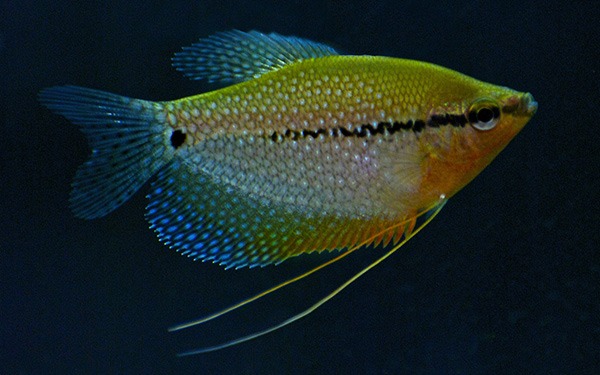
Pearl Gourami are a really unusual freshwater tropical fish that we think will interest many beginner aquarists.
They’re named for the pearl-like pattern of their bodies, although sometimes go by the name ‘lace gourami’. They’re classified as being ‘Near Threatened’ conservation status.
- Typical Size: Up to 4.7″
- Typical Lifespan: 3-4 years
- Breeding: Egg layer, bubble nest builder
- Natural Habitat: Southeast Asia
-
Optimal Temperature and pH: 72-82°F and 7-8 pH
- Optimal Food: Algae based flake food plus freeze dried and live food
- Minimum Tank Size: 30 gallons and fresh air surface
- Behavior: Peaceful and shy
- Best Kept: In a small group, tankmates should be similar sized and non-aggressive
Kuhli Loach

Slightly different to the small freshwater fish we’ve examined so far, the Kuhli loach looks more like an eel.
They’re generally easy to care for thanks to their adaptability, and they stay pretty small so are relatively low maintenance.
- Typical Size: 3-5″
- Typical Lifespan: 10 years
- Breeding: Egg layer, relatively difficult to engineer
- Natural Habitat: Southeast Asia
-
Optimal Temperature and pH: 75-85°F and 6-7 pH
- Optimal Food: Sinking food pellets and live food
- Minimum Tank Size: 20 gallons, affected by sudden water changes so wait a month before introduction
- Behavior: Peaceful, most active at night
- Best Kept: Groups of 3 or more, tankmates should not be big enough to eat them
>>> Read our complete Kuhli Loach care guide
Corydoras catfish
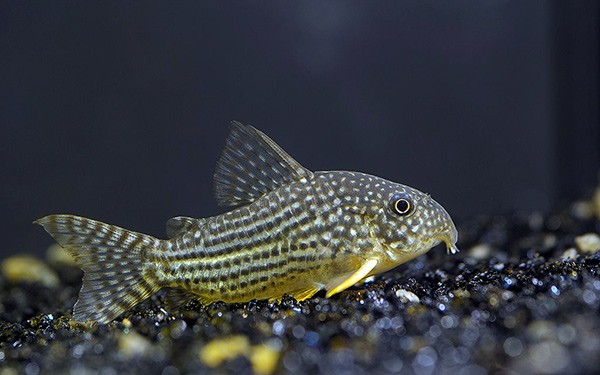
We’d describe Catfish as a beginner/intermediate freshwater fish, that are very popular and available in plenty of different variations. Some are harder to take care of than others.
We’re focusing on the Corydoras Catfish right now: they are bottom dwelling scavengers and many aquarists value them for their peaceful attitude. There are also plenty of different types of Cory Catfish too.
- Typical Size: 2.5″
- Typical Lifespan: 3-5 years
- Breeding: Egg layer, relatively difficult to engineer
- Natural Habitat: South America
-
Optimal Temperature and pH: 72-79°F and 6-8 pH
- Optimal Food: Sinking food pellets and algae wafers
- Minimum Tank Size: 10 gallons
- Behavior: Peaceful
- Best Kept: Groups of 6 or more, good with other peaceful tank mates
>>> Read our complete Cory Cat care guide
Intermediate Freshwater Fish
Betta
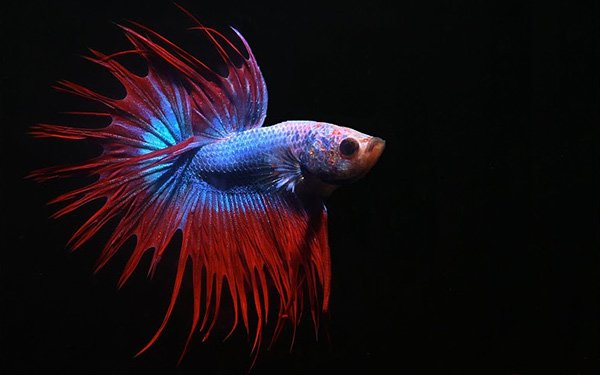
Betta are some of the most beautiful, colorful freshwater fish available but they are known for their aggressiveness in the tank. No wonder that they’re also called Siamese Fighting Fish!
They are categorized as vulnerable in their conservation status. There are a huge number of Betta variations.
- Typical Size: Up to 2.6″
- Typical Lifespan: 3 years
- Breeding: Egg layer, bubble nest builder
- Natural Habitat: Southeast Asia
-
Optimal Temperature and pH: 75-82°F and 7 pH
- Optimal Food: Pellets, flake and frozen foods
- Minimum Tank Size: 45 gallons
- Behavior: Aggressive and territorial
- Best Kept: Alone, with similarly sized tankmates
>>> Read our betta fish care guide
Hatchetfish
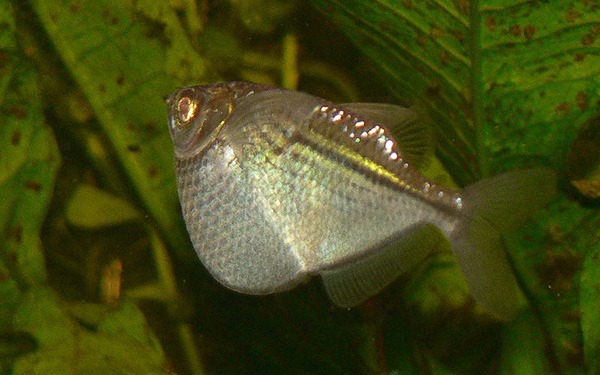
Although Hatchetfish are generally peaceful towards their tankmates, we’ve classed them as for intermediate fish keepers thanks to their inclination to jump out of the tank when they’re alarmed. Remember to keep the lid on securely!
They thrive best when living in a planted aquarium.
- Typical Size: Up to 2.5″
- Typical Lifespan: 5 years
- Natural Habitat: South America
-
Optimal Temperature and pH: 73-81°F and 5.5-6.5 pH
- Optimal Food: Flake and live foods
- Minimum Tank Size: 10 gallons with a secure hood
- Behavior: Generally peaceful although can bicker with other hatchetfish
- Best Kept: In a group of 6 or more
Glassfish
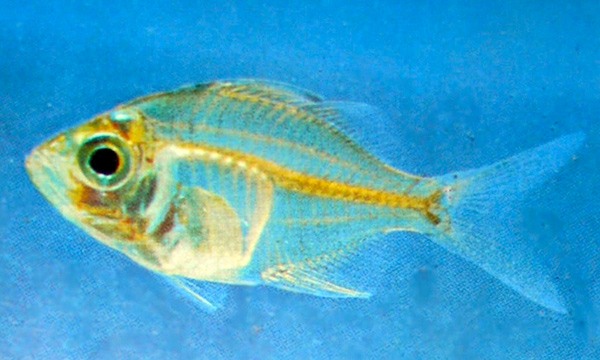
Glassfish are a highly unusual looking exotic freshwater fish and are sure to draw a lot of stares from visitors to your fishtank.
They’re completely translucent and you’re able to see their skeleton and organs. Some are sold ‘dyed’ in order to give them funky colors but you should avoid buying these — they are more prone to infection and early death.
- Typical Size: Up to 3″
- Breeding: Egg layer, reportedly difficult
- Natural Habitat: South Asia
-
Optimal Temperature and pH: 68-86°F and 6.5-7.5 pH
- Optimal Food: Fresh and frozen foods
- Minimum Tank Size: 20 gallons
- Behavior: Peaceful, enjoy fast swimming
- Best Kept: In groups of 5 or more, suited to peaceful to semi-aggressive tankmates (although not ones so big that they might eat them)
Convict Cichlids
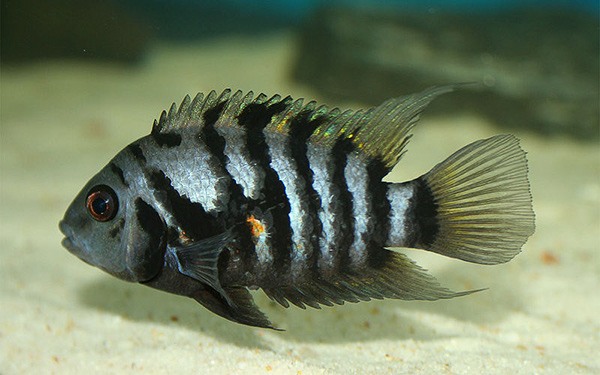
There are thousands of different cichlid variations but we’ve chosen one of the most popular here: the convict cichlid, so named for its incredible black and white stripes!
We’ve marked them as intermediate as they are known for being quite territorial — like many of the cichlid varieties — but they are generally quite easy to care for otherwise.
- Typical Size: Up to 4″
- Typical Lifespan: Up to 10 years
- Breeding: Egg layer
- Natural Habitat: Central America
-
Optimal Temperature and pH: 70-80°F and 7-8 pH
- Optimal Food: Pellets, flake, freeze dried, live and frozen foods
- Minimum Tank Size: 20 gallons
- Behavior: Territorial
- Best Kept: Alone, with other large cichlids
Discus
Discus fish are another type of cichlids, just as common and popular as the Convicts.
They’re known for being one of the most unusually patterned and colorful freshwater fish and come in a number of different colors and patterns, including red turquoise, snakeskin, royal blue and checkerboard. They’re very sensitive to chemical changes in the water, so best suited to experienced aquarists with lots of time available to change water regularly.
- Typical Size: 4.8-6.5″
- Typical Lifespan: 10 years
- Breeding: Egg layer, very difficult to engineer
- Natural Habitat: South America
-
Optimal Temperature and pH: 82-88°F and 6.5 pH
- Optimal Food: Pellets, flakes and fresh food
- Minimum Tank Size: 30 gallons
- Behavior: Sociable and generally peaceful
- Best Kept: In groups in species-only tanks; cardinal tetras and corydoras catfish may make suitable tankmates
>>> Read our complete Discus fish care guide
Tiger Plecos
We love the Tiger Plecos — a beautiful, tiger striped fish.
Although it’s not the biggest freshwater fish, it requires a large tank as it likes its space, and is also best suited to a strong current — hence why it’s better for intermediate fish keepers.
- Typical Size: Up to 5″
- Breeding: Egg layer, spawn inside caves
- Natural Habitat: South America
-
Optimal Temperature and pH: 72-76°F and 5.8-7 pH
- Optimal Food: Algae wafers, flakes and bloodworms
- Minimum Tank Size: 40 gallons
- Behavior: Generally peaceful but can become aggressive as they become adults
- Best Kept: Good in a community aquarium, providing there’s plenty of hiding spaces
Siamese Tigerfish
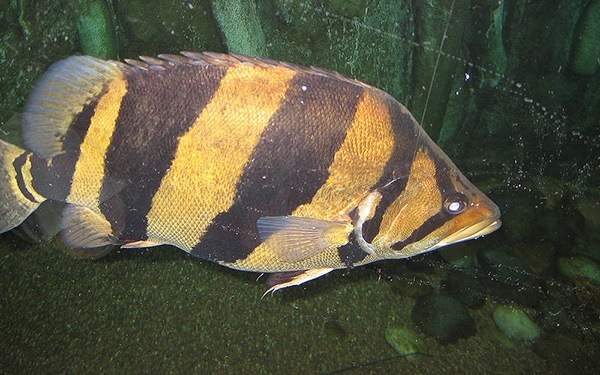
Also known as datnoid pulcher and gold datnoid, Siamese Tigerfish are a critically endangered fish found in Southeast Asia.
It’s striking for its yellow and black striped body. It’s often referred to as one of the biggest freshwater fish as it can reach a massive 16-20 inches in length.
- Typical Size: Up to 16″
- Typical Lifespan: 10 years
- Breeding: Egg layer, very difficult to engineer
- Natural Habitat: Southeast Asia
-
Optimal Temperature and pH: 72-79°F and 7.6-8 pH. They also like brackish water
- Optimal Food: Pellets and frozen foods
- Minimum Tank Size: 125 gallons
- Behavior: Can be aggressive towards own species and predatory towards small fish
- Best Kept: With similar sized fish
Killifish

There are over 1,000 species of Killifish that vary widely in their appearance. Most are small, brightly colored and like to jump — keep a secure lid on your tank!
We’ve classified them as best for intermediate aquarists as males can become aggressive if there are other males in the tank. Their care needs are pretty easy, however.
- Typical Size: 1.5-2.5″, maximum 6″
- Typical Lifespan: 1 year
- Breeding: Egg layer, you will need to imitate their natural habitat
- Natural Habitat: Americas and East Africa
-
Optimal Temperature and pH: 72-79°F and 6-6.5 pH
- Optimal Food: Flake and live foods
- Minimum Tank Size: 20 gallons with secure hood
- Behavior: Males can become aggressive around other males, can be aggressive in community tanks
- Best Kept: In groups with only 1 male
Archerfish
Archerfish are infamous for their spitting — or rather shooting down small prey with water from up to 3 metres away. Here’s a look at it in action:
They prefer to eat live foods, hence why they’re not entirely suitable for beginners.
- Typical Size: 1″
- Breeding: Egg layer, very difficult
- Natural Habitat: Asia Pacific
-
Optimal Temperature and pH: 68-82°F and 7-8 pH
- Optimal Food: Freeze dried and live foods
- Minimum Tank Size: 125 gallons with secure hood
- Behavior: Peaceful
- Best Kept: In groups; good tankmates include pufferfish
Figure 8 Puffer Fish

The Figure 8 is a highly popular freshwater puffer fish that we think is slightly easier to care for than the green-spotted puffer fish.
It has some really beautiful markings but can be aggressive.
- Typical Size: Up to 3″
- Typical Lifespan: Up to 15 years
- Breeding: Egg layer, extremely difficult
- Natural Habitat: Southeast Asia
-
Optimal Temperature and pH: 75-82°F and 7.6-8.3 pH, very sensitive to nitrates and nitrites
- Optimal Food: Snails and flake foods
- Minimum Tank Size: 15 gallons, complex set up required
- Behavior: Generally peaceful but can be aggressive
- Best Kept: Alone, unless you have a large aquarium (10 extra gallons per each puffer)
>>> Read our freshwater puffer fish care guide
Elite Freshwater Fish
Arowana

Arowana double up as probably one of the biggest freshwater fish you can find, as well as the most expensive freshwater fish — the Asian variety, anyhow.
Due to their care requirements and price, we can only really recommend these for the most experienced aquarists. Plus, they jump: to almost 2 meters from the surface!
- Typical Size: 2-3′
- Typical Lifespan: Up to 15 years
- Breeding: Egg layer, mouthbrooders
- Natural Habitat: Asia, Australia, Africa and South America
-
Optimal Temperature and pH: 75-86°F and 7-7.5 pH
- Optimal Food: Pellets, freeze dried, fresh foods, 3 times a day
- Minimum Tank Size: 150 gallons at an absolute minimum, with a secure hood, heavy filtration needed
- Behavior: Dominant, aggressive, solitary
- Best Kept: Alone, or with aggressive fish that cannot fit in its mouth
Axolotl

Also known as the Mexican Salamandar, the Axolotl is critically endangered freshwater amphibian. It’s believed that they may be extinct in the wild, hence why it’s for only the most experienced fish keepers.
They have quite exacting water requirements too.
- Typical Size: 9″
- Typical Lifespan: 10 years
- Natural Habitat: Mexico
-
Optimal Temperature and pH: 61-64°F (never above 75°) and 6.5-8 pH
- Optimal Food: Pellets and fresh food
- Minimum Tank Size: 20 gallons with coarse gravel floor and minimal water flow
- Behavior: Can be predatory
- Best Kept: Alone; they can be cannibalistic when young
>>> Read our complete Axolotl care guide
Green Spotted Puffer Fish

Keeping a freshwater puffer fish is a dream for many an aquarists, but we would recommend the green spotted variety for experienced keepers only — they have very specific care needs and behavior.
While we’ve grouped it with our freshwater fish, it’s worth noting that it thrives best in brackish conditions so you’ll need to get yourself some marine salt.
- Typical Size: 6″
- Typical Lifespan: 10 years
- Breeding: Incredibly difficult, essentially non-existent
- Natural Habitat: Southeast Asia
-
Optimal Temperature and pH: 78-82°F and 7.5-8.2 pH
- Optimal Food: Snails and meat
- Minimum Tank Size: 30 gallons per puffer, tank must be pre-cycled and over filtrated, must be quarantined if wild caught
- Behavior: Insatiable appetite, intelligent
- Best Kept: Alone, or species only with very large tanks
>>> Read our freshwater puffer fish guide
Flowerhorn Cichlids
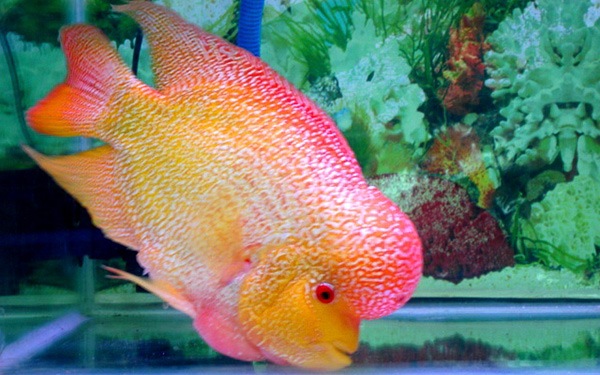
Flowerhorn cichlids are undoubtedly some of the most exotic freshwater fish in the world, with their bright pastel coloration and — you guessed it — flower horn heads.
They’re really for more experienced fish keepers thanks to their aggressive behavior and tendency towards certain diseases.
- Typical Size: 12-16″
- Typical Lifespan: 10-12 years
- Breeding: Egg layer, male can be aggressive
- Natural Habitat: Southeast Asia
-
Optimal Temperature and pH: 80-85°F and 7.4-8 pH
- Optimal Food: Live, fresh and frozen foods
- Minimum Tank Size: 55 gallons, the bigger the better
- Behavior: Aggressive and territorial, intelligent
- Best Kept: Alone
>>> Read our complete Flowerhorn Cichlid care guide
Oscars

The Oscar is another fish in the Cichlid family that’s known for its generous size and rich colorations.
It’s a very popular fish with intermediate and elite aquarists.
- Typical Size: Up to 18″
- Typical Lifespan: 10-13 years
- Breeding: Egg layer, very difficult
- Natural Habitat: South America
-
Optimal Temperature and pH: 74-81°F and 6-8 pH, very sensitive to nitrates, nitrites and ammonia,
- Optimal Food: Live, fresh foods, fruits, Vitamin C, can be hand fed
- Minimum Tank Size: 75 gallons, require lots of water maintenance
- Behavior: Aggressive and territorial, intelligent
- Best Kept: Alone or kept with other large fish in very large tank
>>> Read our oscar fish care guide
Stingrays

Yes, stingrays are freshwater! We’ll be focusing on Potamotrygon Motoro stingrays as these are the most common in home aquariums.
They can be difficult to look after: mostly as you’ll need a huge aquarium, but also because they have some exacting requirements for water quality and their preference for live food. Plus, you know, they’re venomous.
- Typical Size: 10″-5′ in diameter
- Typical Lifespan: 15-20 years
- Breeding: Up to 3 small litters a year, gestation from 3-12 months
- Natural Habitat: South America
-
Optimal Temperature and pH: 79-81°F and 6-7.5 pH, large biological filter needed
- Optimal Food: Live and frozen foods
- Minimum Tank Size: 120 gallons, require fine sand substrate, minimal decor
- Behavior: Active and intelligent
- Best Kept: Alone or in groups if tank is large enough, no aggressive or ‘nippy’ tankmates – instead large and top dwelling
Phew! Now that’s our complete guide to freshwater aquarium fish.
What have you got your eye on?


